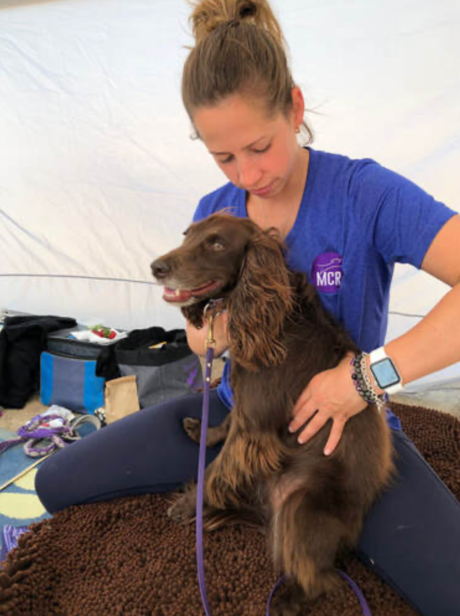
The fascia is quite simply the tissue that holds you together! Injury and pain to one part of the fascia can have profound effects on the rest of the body. Knowing the role the fascia plays in the body, how it can be injured, and recognizing fascia pain is crucial for any dog owner looking to prevent injury or improving their dog’s performance.
What is the Fascia?
How can an Injury occur?
- A lifestyle of limited physical activity (too little movement day after day)
- Repetitive movement that overworks one part of the body
- Trauma such as surgery or injury
- Fatigue caused by stress accumulated over days or weeks of work
When a body has been injured, the fascia will tighten, stiffen and even turn into scar tissue in its effort to bring stability to the body. As the fascia ‘thickens’ with scar tissue the normal “slide and glide” of tissue is disrupted. This disruption of normal muscle movement can lead to other, chronic conditions, such as degenerative arthritis and pain. As the muscles lose their ability to slide naturally the body experiences increased tension which causes dysfunction and ‘mis-fires” of the mechanoreceptors and in turn causes dysfunction and “mis-fires” of pain receptors.
What does Myofascial pain look like?
Signs of Myofascial pain include:
- Reluctance to be touched, handled, petted, or groomed
- Sore back legs
- Skin twitching or flinching
- Restricted range of movement
- Behavioral changes
- Yelping when touched in a particular spot
- Excessive rolling on their back
How to Improve Fascia Health
- Warm up before and cool down after strenuous activity.
- Avoid over exertion and monitor your dogs signs of fatigue.
- Movement is medicine! Keeping active throughout daily life is important to keep the fascia smooth and flexible.
- Myofascial release techniques using gentle, prolonged and sustained touch to allow the collagen fibers to re-align in an appropriate pattern.
- Laser therapy – Scar tissue can disappear over time as you bring circulation in and help the body heal the area.
- Acupuncture to address deeper fascia tension.
When your dog is experiencing fascial pain remember that the body will compensate in other areas so regular assessments by a canine physical therapist can help with early identification of problems relating to the fascia.


